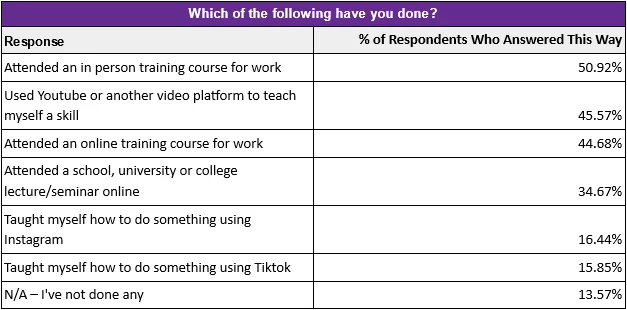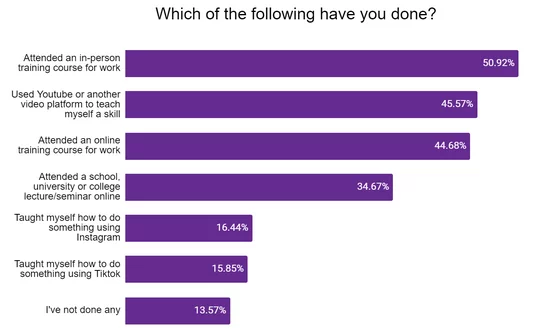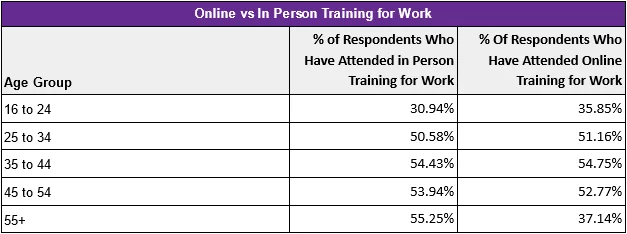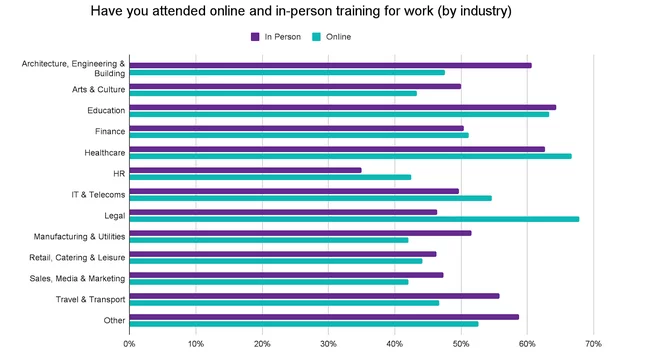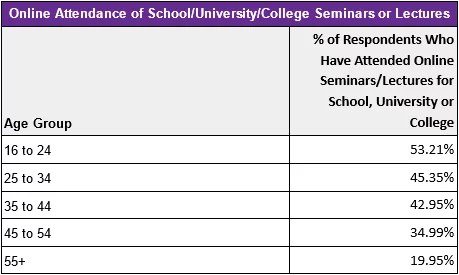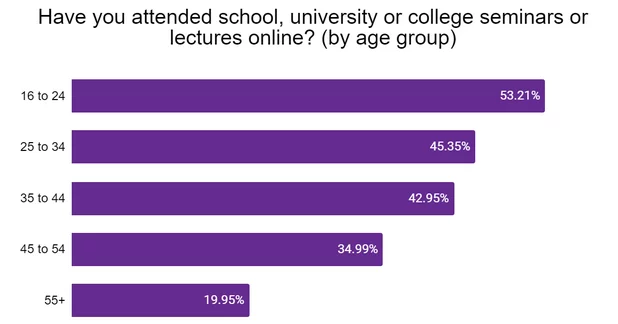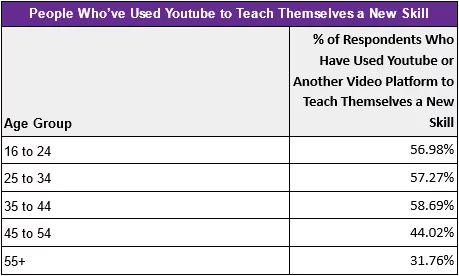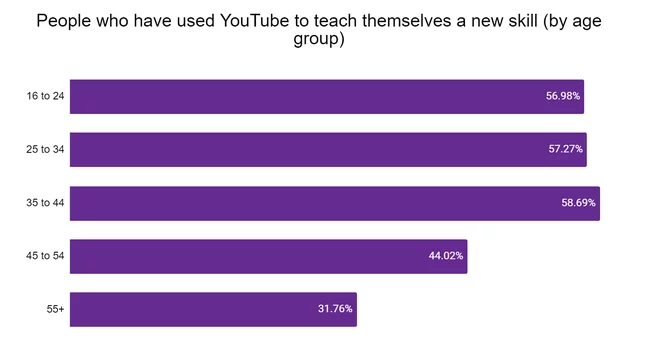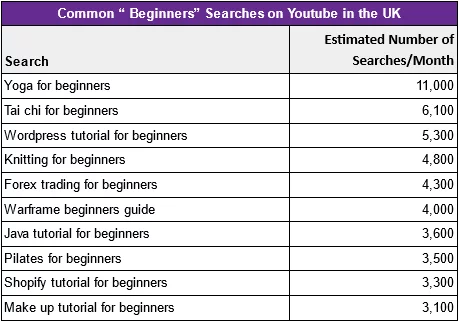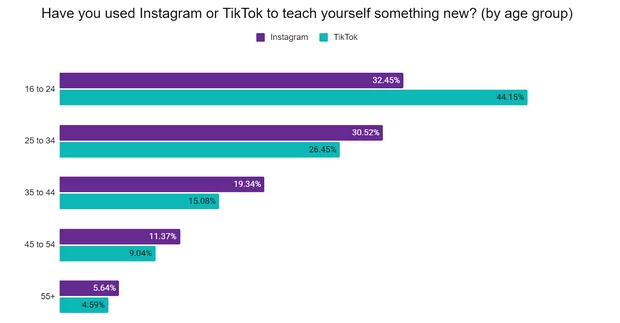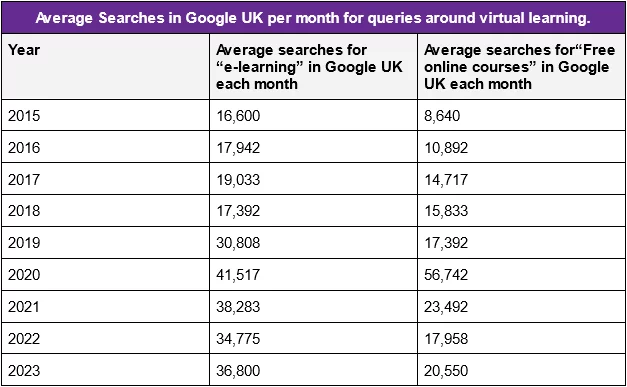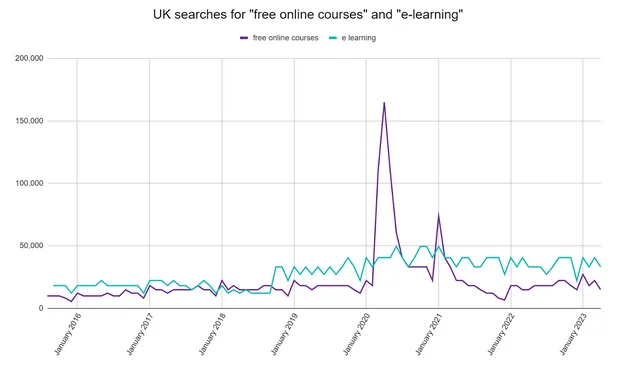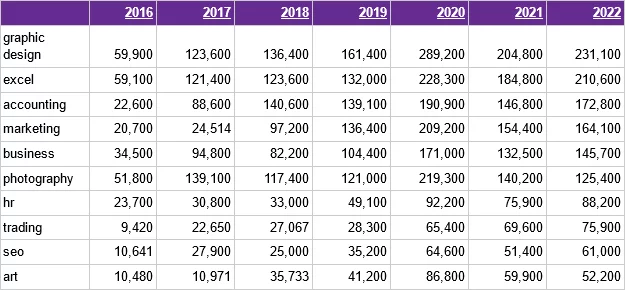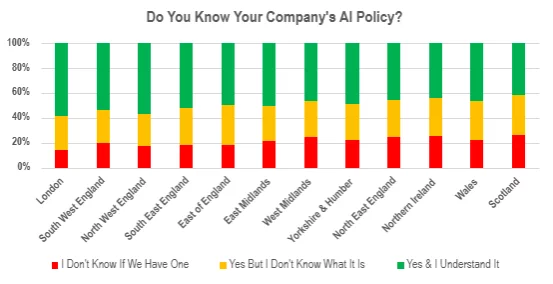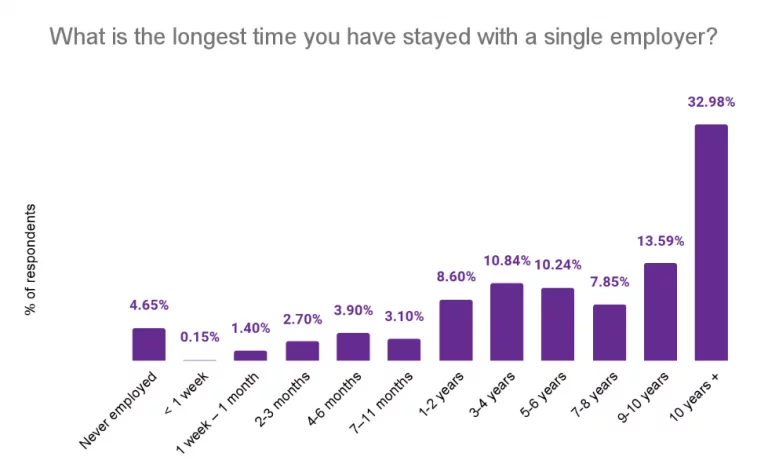
Virtual Learning Statistics 2024: E-Learning
Contents
- 1 The Bite Size Facts, Figures and Stats
- 2 How Many People Have Taken Park in Virtual Learning in the UK?
- 3 Online vs In Person Training for Work: The Stats
- 4 Education and Virtual Learning: Online Seminar/Lecture Statistics
- 5 Youtube for Online Learning
- 6 Tiktok and Instagram – Home of Education?
- 7 Demand for Online Courses
- 8 Most in Demand Online Courses
- 9 Online Education Market Size
- 10 Virtual Learning in 2023
- 11 Methodology and Caveats
Virtual learning allows just about anybody to learn just about anything from the comfort of their own home.
The potential is boundless. But how popular is e-learning?
What are the most in demand virtual learning courses? And where else online are people learning?
We’ve polled the public, crunched some numbers and proudly present our 2023 round up of virtual learning statistics.
The Bite Size Facts, Figures and Stats
If you’re here for just a bite size snippet of our report, then we’ve summarised what we consider the most interesting statistics on virtual learning right here. You can find more detail and context within the article:
- Almost half (44.68%) of people in the UK have attended an online training course for work
- That’s almost as many as have attended in person training (50.92%)
- Just over a third have attended a virtual seminar/lecture for university, school or college
- An impressive 45% of us have used Youtube or another video platform to teach ourselves how to do something
- Over half of people aged between 16 and 44 have used Youtube (or a similar video platform) to teach themselves a new skill

How Many People Have Taken Park in Virtual Learning in the UK?
Just how many people have undertaken some sort of virtual learning as of 2023 here in the UK?
We thought the best way to find out would be, well, to ask! So, with the help of a professional market research company, we polled 2,019 people in May 2023 to ask:
- Which of the following types of learning have you ever done? (Check all that apply):
-
- Attended an in person training course for work
- Used Youtube or another video platform to teach myself a skill
- Attended an online training course for work
- Attended a school, university or college lecture/seminar online
- Taught myself how to do something using Instagram
- Taught myself how to do something using Tiktok
- N/A – I’ve not done any
This is what we found:
More than half of us have attended in person training for work and almost half (44.68%) have attended an online training course for work
In other words, despite the fact that virtual learning is much much newer than in person classroom based learning, almost as many people in the UK have attended an online course for work as have attended one in person.
This growing adoption of digital education is fueled by advancements in e-learning software development, making online courses more interactive, accessible, and effective than ever before.
Undoubtedly accelerated by Covid, over a third of people have also attended a school, university or college seminar or lecture online.
But when we break these figures down by age, sector and, in some cases, even region, we start to see demographic differences. So let’s dive into those.
Online vs In Person Training for Work: The Stats
While classroom based training academically and professionally feels as old as time itself, virtual learning technologies are much newer.
In spite of this, almost as many people in the UK (44.68%) have attended an online course for work as have attended an in person one (50.92%).
But does it vary by age?
What’s interesting here is that, overall across all the population aged 16 and over, more people have attended in person training than have attended online courses (bear in mind, many will have done both and selected both)
However, with those aged 16 to 44, they are now more likely to have attended an online training course than an in person one for work.
The reverse is true for the 45s and over.
With the youngest age group (of which fewer are likely to be in the workforce yet), 30.94% have attended in person training while 35.85% have attended online.
When we look at the 25 to 34s and the 35 to 44s, it’s very much neck and neck. They’re both marginally likelier to have attended virtual learning courses than in person. But it’s close.
For those aged 55 and over, 55.25% have attended in person training while just 37% have attended online training courses with work.
So age is playing a huge factor here.
But does industry?
We segmented our responses by the industry in which people work/worked as well, in order to try and understand which sectors are the most/least likely to engage with virtual options for their employee training.
Here’s what we found:
Note that overall instances of attending either type of training are higher here as these figures are taken only from respondents who’ve worked and would naturally exclude students or those who haven’t worked in any specific sector.
The sectors in which people are likelier to have done virtual training than in person are:
- Finance
- Healthcare
- HR
- IT and Telecoms
- Legal
We can see that any sort of training (online or in person) is particularly prevalent with education and healthcare and both industries appear to embrace e-learning (albeit potentially accelerated by Covid).
Education and Virtual Learning: Online Seminar/Lecture Statistics
It’s hard to forget lockdowns. The Covid pandemic meant that educational institutions were forced to close and much learning went online.
So how many people have attended school, college or university seminars or lectures online?
The overall answer is just over a third (34%). But are younger people, who were likelier to still have been in their studies during the Covid pandemic, likelier to have done this?
The short answer is yes – considerably so.
Over half of those aged 16 to 24 have attended online lectures or seminars. The number drops through each age range.
Those aged 16 to 24 are the only age group where a majority have attended online lectures.
Once we reach the 55+ age group, less than 1 in 5 of them has attended an online lecture or seminar.
Youtube for Online Learning
One of the things we asked our respondents about is whether they’ve ever used Youtube to teach themselves a skill. With video tutorials available freely on, well, pretty much anything, Youtube is an immense informal potential source of education.
45.57% of people said they’d taught themselves a skill using Youtube or another video platform
But let’s look at this by age:
Over half of those aged between 16 and 44 have used Youtube to teach themselves a new skill.
Of those aged 45 to 54 this is still an impressive 44%, while 31% of the 55+ age group has also used the platform to upskill themselves.
According to data from Ahrefs.com, there are over half a million different “how to” type queries searched in Youtube each month
The 10 most commonly searched how to queries in the UK on Youtube are:
Tiktok and Instagram – Home of Education?
We might associate Tiktok with memorable dance routines and Instagram with filtered foodie photos. But these two behemoth platforms have attracted learners as well, looking to quickly pick up new skills using short form, easy to watch video.
From our survey, we found:
- 16.44% of people have taught themselves how to do something using Instagram
- 15.85% of people have taught themselves how to do something using Tiktok
Amongst the 16 to 24s, just under a third have taught themselves a new skill using Instagram, while an impressive 44% have done the same thing using Tiktok.
This is the only age group at which Tiktok is more commonly used for upskilling than Instagram.
Just under a third of 25 to 34s and and just under 1 in 5 35 to 44s has taught themselves something new on Instagram.
The use of either platform for skills enhancement is much less common amongst those aged 45 and over.
Demand for Online Courses
With so many millions of us in the UK heading to Google daily to look for products, services or information, search habits are an excellent way to gauge demand for something.
We took at look, using kwfinder.com, at the number of searches in the UK for queries like:
- Free online courses
- E-learning
We found:
Most in Demand Online Courses
To get a feel for the demand of various online courses, we used kwfinder.com again.
We looked at data from a list of 30 common online courses and came up with a top ten based on those that had the most annual searches in 2022.
We searched for keyword data by looking up [subject] + “Courses Online” in kwfinder.com. So for example, “graphic design courses online.”
We totalled all of the monthly searches for each year together to get annual totals:
As of 2021, graphic design is the most in demand area for online learning based on our data, with 231,100 searches for “graphic design courses online” in 2022.
In all areas, we can see significant increases in demand in recent years for online courses.
Online Education Market Size
The Online education market has been growing steadily over the last 6 to 7 years, which is also reflected in the demand for courses we’ve seen in Google Search.
The total revenue for online learning was estimated at £50.93bn (worldwide) in 2017 and in 2023 that is estimated to be around £132.77 billion, marking a 161% increase.
Source: https://www.statista.com/outlook/dmo/eservices/online-education/worldwide?currency=GBP#revenue
Between 2017 and 2020, the most notable growth in online education came in people using online learning platforms. This demonstrated a 140% increase between 2017 and 2020, compared with a 45% increase in those using online universities.
The rate of growth for online learning revenues slowed between 2020 and 2023 (potentially down to an overly inflated rate of growth earlier due to Covid).
But, interestingly, since 2020 the rate of growth in revenues from online university learning has increased.
Even post covid, are people still now happier to do their university learning online? And are universities investing more offering online only learning?
Virtual Learning in 2023
The virtual learning market is huge and growing. The opportunity this presents for both educators and learners is immense, with a plethora of skills and qualifications now available to use wherever in the world we happen to be learning from.
In other words, you no longer need to be in a classroom to be either a teacher or a student.
And as technology improves and online learning becomes the norm, we’d expect only to see this market thrive into the future.
Methodology and Caveats
We worked alongside Censuswide to acquire our data for the survey element of our research. This is because they’re experts in market research operating under ESOMAR principles to ensure our survey is as accurate as possible.
We surveyed a demographically representative panel of 2,019 people in the UK aged 16 and over.
The raw data is available on request by emailing: max@acuitytraining.co.uk !
We took keyword data from kwfinder.com. In the “Demand for Online Courses” section, we took the average number of monthly searches for each month where data was available and we then used that data to provide an average of the monthly searches in each year from 2016 onwards.
In any month where there was missing data from kwfinder.com, we ignored this month and took an average of available months only.
The “Most in-demand online courses” section looked at a list of 30 popular online courses from various sources.
We then found the total number of searches for each year since 2016 and ranked them according to how many searches were made for each keyword and we took our top ten from those with the highest searches in 2022, which was the last full year of available data at the time of writing (June 2023).
The Online Education Market uses figures from Statista. One important caveat here is that the data for 2023 contains some projections based on how the market is expected to perform based on their available statistical criteria.
For more useful insights like this, check out our AI Statistics for 2023 here!
- Facebook: https://www.facebook.com/profile.php?id=100066814899655
- X (Twitter): https://twitter.com/AcuityTraining
- LinkedIn: https://www.linkedin.com/company/acuity-training/
